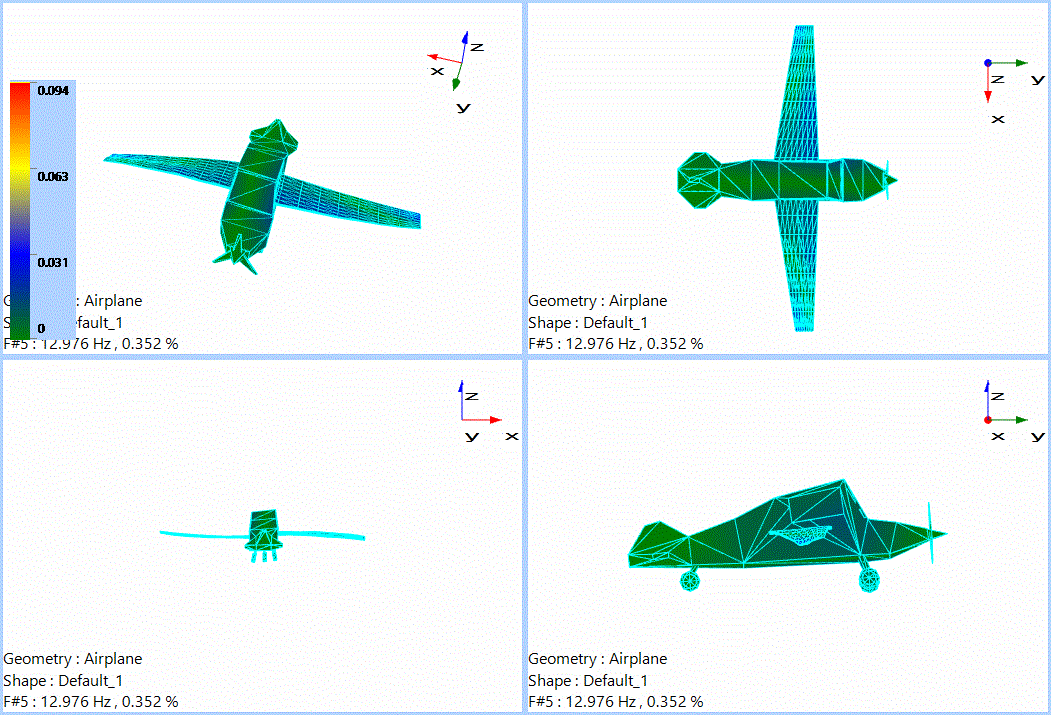News & Articles
For engineers needing to verify performance against rigorous requirements, CTP ensures adherence to complex standards like MIL-STD-810H Method 520.5 Combined Environments. The new Combined Test Procedure (CTP) feature in EDM 12.1 allows users to synchronize temperature, humidity, and vibration testing in a single, unified workflow.
Traditional SoR control methods, whether single-axis sequential testing or multi-axis TWR waveform replication, have significant limitations in representing true multi-directional vibration environments. The development of Crystal Instruments’ real MIMO Sine-on-Random control overcomes these barriers by integrating advanced adaptive MIMO algorithms with independent control of sine and random components
Air cooled 60 kN electrodynamic shaker is capable of testing medium to large size assemblies up to 1000 kg on the bare armature, with even more load support utilizing the head expander (with pneumatic load support) or the high pressure slip plate.
The EDM 12.1 release introduces Live Frequency-Domain Animation to help users visualize and interpret structural vibration data during testing. With this enhancement, users can now observe Operational Deflection Shapes (ODS) in real time while running Random, Sine, or other data acquisition or modal tests.
Modal analysis of a cantilevered plate was successfully performed using the Luma-600 laser vibrometer. The results align with expectations and confirm the effectiveness of the Luma-600 as a non-contact vibration measurement tool for accurate and efficient modal testing.
To ensure aircraft safety and flutter-free operation within safe flight envelopes, high-channel-count Ground Vibration Testing (GVT) systems are widely employed for structural analysis. These systems facilitate seamless data acquisition, analysis, and post-processing to assess the dynamic behavior of aircraft. However, traditional GVT approaches often involve extensive cabling, complex test setups, and time-intensive data processing, making them cumbersome and resource-intensive.
Crystal Instruments continues to push the boundaries of precision measurement technology. Our latest release marks a substantial evolution in data acquisition and vibration control performance, with comprehensive enhancements to the Spider-80X, Spider-80Xi, Spider-80Hi, Spider-81, and Spider-81B platforms.
Crystal Instruments is proud to be featured in the latest issue of Essais & Simulations magazine, alongside our valued distributor dB Vib Groupe. Our Ground Recorder System (GRS) is highlighted with a detailed feature spanning pages 38 to 40 in addition to a full-page advertisement on the back cover!
Pyroshock or Pyrotechnic testing using simulation or explosive devices are typically used to test and qualify components for the aerospace industry. Components and methods used for acquiring Pyroshock data play an important role in ensuring that the acquired data is valid and not corrupted by several possibilities including the choice of sensors and the acquisition device.
Santa Clara, CA - November 25, 2025 — Crystal Instruments Corporation, a global leader in vibration testing, dynamic measurement, and data acquisition technologies, today announced that the United States Patent and Trademark Office has officially granted U.S. Patent No. 12,483,216 B2, titled “Data Recording Based on Dual ADC Architecture.” The patent is credited to inventor James Q. Zhuge, founder and CEO of Crystal Instruments.
We’re proud to announce the release of EDM 12.1, the latest version of Crystal Instruments’ Engineering Data Management software suite. This update brings major hardware innovations, advanced testing capabilities, and significant user experience improvements across all major product lines — including single-axis and MIMO vibration testing, combined environmental testing, dynamic signal analysis, and modal testing.
Today, President Trump signed an executive order advancing the development of supersonic flight. We’re proud and excited to contribute to this bold initiative with our cutting-edge Ground Recorder System!
CI presented solutions for environmental vibration testing, structural testing, and dynamic signal analysis at the 2025 Advanced Clean Transportation (ACT) Expo.
We successfully completed the VIB-101 vibration operation training course last week. It’s one of our vibration testing training courses offered at our North Carolina facility.
Crystal Instruments (CI) is proud to announce our partnership agreement with Kistler Iberica to offer our dynamic test and measurement equipment in Spain and Portugal.
Crystal Instruments HALT Testing Lab is equipped with two Qualmark chambers (OVS 3.0 Typhoon HALT and OVS 2.5 HALT) and provides highly experienced HALT testing services.
HASS development utilizes (vibration, thermal, and electrical, etc.) limits found in HALT, so the values derived therein are a prerequisite for profile development.
How mature is my product?
How do we test it?
How many should we test?
Fixturing and instrumentation
What if failure occurs?
HASS uses the Operational Limits identified within HALT Testing to define a profile. Unlike HALT, HASS is performed with an autonomous profile and functionality is most often only determined pre- or post-testing.
HALT (Highly Accelerated Stress Testing) is a reliability testing method that when facilitated correctly has proven to provide a level of robustness and ruggedization rarely achieved by any other traditional methods of testing.





















